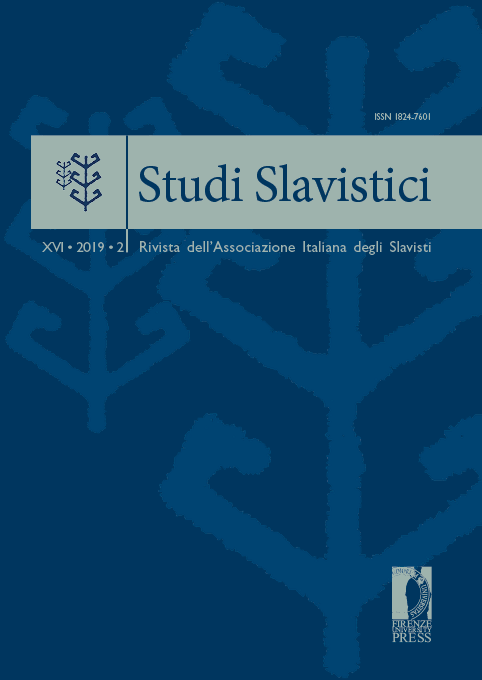Maximus the Greek’s Speech on Instability and Unrest (Slovo o nestroenijach i bezčinijach). On the sources of Vasilija’s Lament
Published 2020-01-20
Keywords
- Italian-Russian Cultural Relationships,
- Italian Literature Influence in Russia,
- Intellectuals and Power in Russia
Abstract
This work by Maximus the Greek, probably written in the middle of the century, has as its protagonist an allegorical personification, a woman named Vasilija, crying, dressed in widowhood and surrounded by wild beasts, in dialogue with a wayfarer. Her long lamentation contains constant references to the severe vaticins of the Old Testament prophets and aims to illustrate the situation of disorder of the present epoch. The character recalls the image of the ‘virgin caste’ of Pauline origin (2 Cor.11, 1-2), present in the canzone of Savonarola De ruina ecclesiae with references to the Old Testament writings and the Apocalypse. Maksimus elaborates this Savonarolian model, also taking into account the canzone De ruina mundi and on the basis of a complex and well constructed biblical exegesis illustrates the allegory not only in relation to the Russian empire, but more generally in the universal horizon of history. By interpreting the relationship between earthly power and the ‘kingdom of heaven’ in an eschatological key, Maksimus gives a fundamental role to the prophetic figures of both the Old Testament and the history of the church in which the author, the wayfarer’s alter ego in dialogue with Vasilija, recognizes himself.


